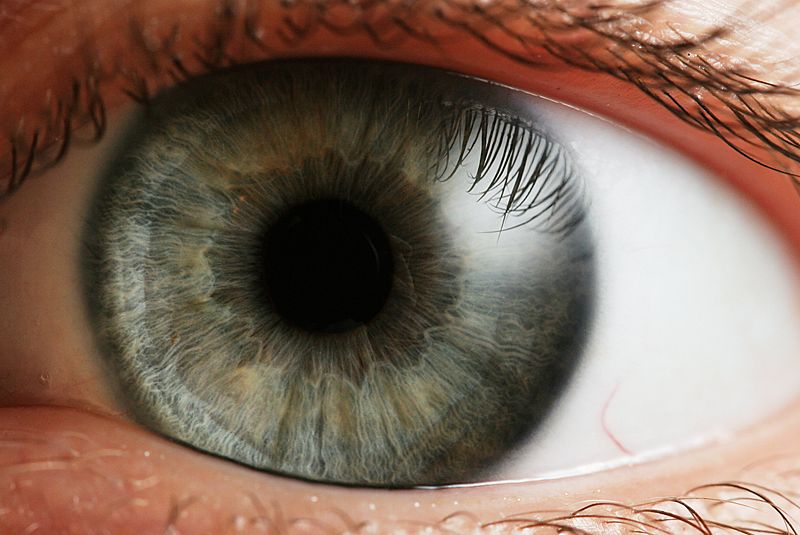Stem Cells Spontaneously Sorted for Sight
Interview with
Chris - In a landmark breakthrough this week, Japanese scientists have used stem cells to grow a new retina in a dish, and this could hold the key to one day producing a replacement retina for patients who have been blinded by diseases or eye injuries. To tell us more about this and how it works, we're joined by University College London researcher Dr. Jane Sowden, who wrote a commentary on the work this week. Hello, Jane.
Jane - Hello, Chris.
Chris - So do tell us first Jane, what actually in a little bit more detail, have these researchers been able to do?
Jane - In this new study, Sasai's lab have shown that it's possible to grow the complex structure of the retina in a cell culture dish. So the retina is the complex layer of neural tissue at the back of the eye which detects light and transmits visual information to the brain. What's really impressive about the new study is that the synthetic retina were grown from an embryonic stem cell line. So these are the pluripotent cells which were able to generate all the different cell types in the body. So the starting point in these experiments is a set of identical cells and what Sasai found was that under certain culture conditions groups of the cells self-organised and spontaneously formed into a cup shape called the optic cup, which is shaped rather like a brandy glass. From the inner layer of this cup the retina forms, and indeed it did differentiate in the dish.
 Chris - Why has this not been possible before? What breakthrough have they made, so that we will have been able to make this occur in a dish where previously, scientists have failed?
Chris - Why has this not been possible before? What breakthrough have they made, so that we will have been able to make this occur in a dish where previously, scientists have failed?
Jane - Well, one of the key components that they added which previously was not used was something called matrigel, which is a component of basement membrane, and so that seems to have been important for helping the cells to form into a layer from which the retina develops. This process in human life would occur by around the 6th week of development. In their study, they used mouse embryonic stem cells, so an important next step will be to see if the same approach can be applied to human embryonic stem cells.
Chris - And what about informing our understanding of how this structure does develop? Presumably, because you can now make it happen in a dish, you can begin to interrogate it genetically and ask what genes are being turned on in what cells and in what order to make this structure form.
Jane - Absolutely. I think it provides us with a new system to study how the eye develops and that's important for understanding the situations where it doesn't develop normally. I think it's also a very important discovery as it indicates that the embryonic stem cells do have instructions that allow them to self-organise and this will likely apply to other tissues as well as the retina. And so, maybe we're at the beginning of witnessing more abilities of embryonic stem cells to self-organise.
Chris - Now you tantalisingly mentioned earlier, as did I in the introduction, that this might be a step towards being able to grow replacement tissue for people who have eye injuries or eye diseases that cause damage to the retina. Critically, in this paper from Japan, they used embryonic stem cells, but someone who's got an eye disease, obviously, they're beyond the embryo stage by then usually. Is there another cell type that we might be able to make this work from in order to do what they've done for the mouth in the dish in a human?
Jane - Yes. There are human embryonic stem cell lines and I think the other possible source would be what are called induced pluripotent stem cells where embryonic stem cells are generated from other tissues. So either of those cell sources could potentially be used to generate new retinal cells that could be transplanted into the diseased retina in order to provide a treatment for retinal diseases involving loss of retinal cells.
Chris - Do you think if we did get to that stage, if you were to take these newly generated retinal cells and put them into the diseased eye, that they would have a chance of restoring vision for that recipient?
Jane - Yes. I mean, there is still a lot of work to be done, but we and others have shown that if you take immature photoreceptor cells and transplant those into the diseased retina, they're able to restore some light sensitivity. Now, in order to take that kind of approach to patients, it's essential to have a source of immature photoreceptors and it's possible that these kinds of synthetic retinae could provide a source of cells that could be suitable for transplantation into patients.
Chris - What sorts of diseases would you think would be amenable to being treated like that?
Jane - So there are many different types of retinal disease that cause blindness. A large number involve the death of the photoreceptor cells, the cells that sense light. They would include conditions like retinitis pigmentosa and lots of different types of inherited retinal disease which affect 1 in 3,000 people. So those sorts of conditions could be amenable to retinal stem cell therapies.
Chris - Terrific! Jane, thank you very much for joining us to tell us about the work.
- Previous Magnetic Anapoles
- Next Fukushima Reactor Review










Comments
Add a comment